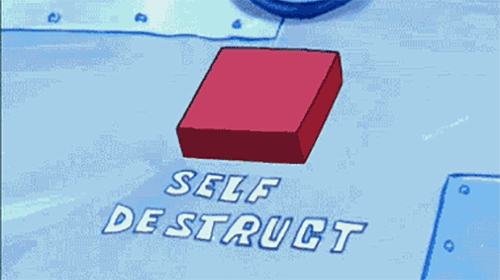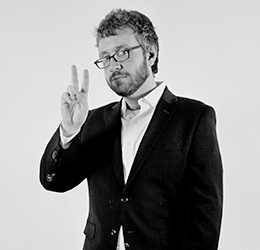Learn How to Destroy the Internet
POSTED ON: February 21, 2018

In a time of dark webs, "ransom ware" and state-run cyber attacks, it may strike some as either alarming or thrilling to learn that a popular course open to all students, taught at the School of Art, has taken on the theme of "Destroy the Internet." Officially titled Interactive Design Concepts, it's a Spring studio class that was co-developed by Erin Sparling, an adjunct professor who has taught at the school for ten years. The course began seven years ago as the advanced continuation of a Fall semester techniques class focused on the language of building websites. After compressing more and more material into the first semester class, this year Sparling has revised the curriculum for the advanced class into Destroy the Internet. But it's not quite what it seems.
"It's about destroying the preconception that the internet is just this flat surface we use," Sparling says. "The course is really more about exploring how we can manipulate what we expect of it. The intoductory class now assumes consuming data and doing something with it. So, I asked myself, 'what's next?' "

For his day job, Sparling is head of engineering for new products and ventures at the New York Times. He combined an art school background with an autodidact's interest in programming to create a career path that has led to managing two departments. But he makes the time to teach here. "I love teaching at The Cooper Union because it is the exact opposite of what I do during the day. At the job, I am working with teams that manage teams that are building systems that help people put in information that eventually make a website. There are many layers of abstraction away from code. Then I come here and I start with a student who has never thought about the semantics of the internet or what a tag looks like."
In spite of the theme, "Destroy the Internet" is not focused on malicious hacking, though the idea of it is explored. Sparling cites one of his "favorite" hacks as one where a programmer attached an altered printing script to his resume and sent it out to dozens of companies. He expected that someone in some HR department would print it out on a particular, vulnerable office printer that would become, as a result of the script, a backdoor to the company's network. "The HR person did nothing wrong," Sparling points out. "But just based on that user behavior this entire series of exploits happens. You can't learn how to do that type of stuff in a single semester. But those types of things are interesting to think about."
The first assignment of the class is to build an extension for Chrome, the web browser. Simple extensions can change the wording of sites visited while more sophisticated ones can change the aesthetics or functionality of sites. "So students are thinking about the web browser as a thing to be manipulated, not just the web page itself. Later we get more into thinking about user expectations around e-commerce systems and how to exploit those. I really mean that the internet can be an artistic medium. It's not just a website. It's this ecosystem of engineering, data, user behavior and all kinds of fun stuff."
As a course that is open to all students, Sparling says he gets a mix of students from beyond the School of Art. "After the first few years of teaching it exclusively in the School of Art I kept getting inquiries from students at other schools. The engineering students in particular are so often focused on the technical side of things that the idea they can apply lots of the logic side of that to something that works immediately is appealing to them. There are a few group projects as the semester goes on so it is good to have interdisciplinary teams."
A future assignment will be for students to propose a specification for a thing that shouldn't be online. The follow-up assignment will be to propose how to exploit a system a student has designed for a thing that should not be online. "The purpose of the class is to expose all of those machinations behind the scenes and consider them as the next step in the artistic medium to exploit." As Mikhail Bakunin, the father of Anarchism wrote in 1842: "The urge to destroy is also a creative urge.”




